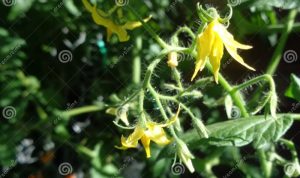Spider Plant Flower and Propagation
Flowers on spider plant – A fleeting bloom, a whisper of white, the spider plant’s flower, a fragile promise. It holds the key to a generation, yet its legacy often lies dormant, overshadowed by the prolific ease of its vegetative offspring. The delicate dance of sexual reproduction, a gamble against the certainties of cloning, plays out in subtle ways within this common houseplant.The spider plant’s flower, a small, star-shaped blossom borne on a slender stalk, is the stage for sexual reproduction.
Within its heart, pollen, the carrier of genetic information, awaits its journey. This journey, dependent on the wind or perhaps a visiting insect, is a precarious one, a gamble on chance encounters. Successful pollination leads to the formation of seeds, tiny vessels holding the potential for new life, each a unique combination of parental traits, a slight variation on a familiar theme.
Seed Production in Spider Plants
The process of seed production begins with the union of pollen and ovule within the flower. This fertilization triggers a transformation, the delicate flower giving way to the development of a seed pod. Inside this pod, tiny seeds mature, gradually accumulating the resources they’ll need to germinate and grow. These seeds, often overlooked in favor of the readily available plantlets, represent the slower, less predictable path to propagation.
The seeds are small and dark, requiring specific conditions for successful germination, a delicate balance of moisture, temperature, and light. Their potential for diversity, however, remains a captivating aspect of the plant’s life cycle.
Sexual versus Asexual Reproduction in Spider Plants
A stark contrast exists between the two modes of reproduction. Asexual reproduction, through the prolific production of plantlets, offers a guaranteed, rapid expansion of the colony. Each plantlet is a clone, an exact genetic replica of its parent, ensuring the continuation of a successful genotype. Sexual reproduction, via seeds, introduces an element of uncertainty. While offering genetic diversity and the potential for adaptation, it is a less efficient and less reliable method, often yielding fewer offspring and requiring more time and care.
The spider plant, in its wisdom, employs both strategies, hedging its bets on the certainty of cloning and the potential of genetic variation.
Propagating Spider Plants from Seeds, Flowers on spider plant
The propagation of spider plants from seeds, a less common but rewarding endeavor, requires patience and attention to detail.
- Seed Collection: Carefully collect the mature seeds from the dried seed pods. Handle them gently to avoid damage.
- Seed Starting Mix: Prepare a well-draining seed starting mix, ensuring it’s free of pathogens and pests. A mixture of peat moss and perlite works well.
- Sowing Seeds: Sow the seeds lightly onto the surface of the moistened seed starting mix. Do not bury them deeply.
- Maintaining Moisture: Keep the mix consistently moist, but not waterlogged, using a fine mist spray to avoid disturbing the delicate seeds.
- Providing Light: Place the seeded container in a location with bright, indirect light. Avoid direct sunlight, which can scorch the delicate seedlings.
- Germination and Growth: Germination typically takes several weeks. Once seedlings emerge, gradually increase light exposure and provide gentle watering.
- Transplanting: Once seedlings have developed several true leaves, carefully transplant them into individual pots containing a well-draining potting mix.
The journey from seed to mature plant is a lengthy one, a testament to the resilience of life, a quiet counterpoint to the rapid proliferation of the plantlets. A melancholic beauty resides in the slow unfolding of potential, a poignant reminder of the fleeting nature of blooms and the enduring legacy of seeds.
FAQ Summary: Flowers On Spider Plant
What is the best time of year for spider plants to flower?
Spider plants typically flower in spring and summer, although indoor conditions can influence flowering time.
Do spider plant flowers attract pollinators?
Yes, spider plant flowers attract pollinators such as bees and flies.
How long do spider plant seeds take to germinate?
Germination time for spider plant seeds varies but generally takes several weeks under suitable conditions.
Are spider plant flowers fragrant?
Spider plant flowers generally have a mild, sweet fragrance.
Can I use spider plant flowers for propagation?
While possible, propagation via seeds is less efficient than propagation via plantlets.
The delicate white flowers of the spider plant, a common sight in many homes, offer a charming contrast to the lush green foliage. Unlike the spider plant’s prolific blooming, consider the frustration of a tomato plant refusing to flower; if you’re facing this issue, check out this helpful guide on tomato plant not flowering for solutions.
Returning to our spider plants, their cheerful blossoms are a testament to their easy-going nature, a welcome sight after any gardening challenge.






